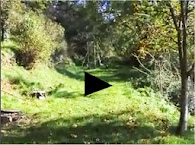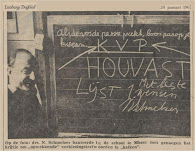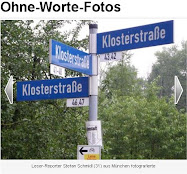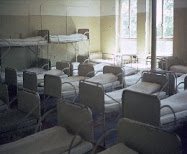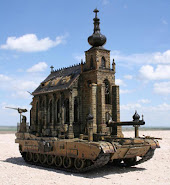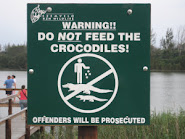 |
| klik |
maandag, november 30, 2015
# 35 . dwelling crankily on old wounds: "Go to hell, bitch" Dennis Hart
When you are ready to talk we are ready to listen

Church painfully slow to learn lessons from abuse
Catholic leaders have been loath to tackle institutional complicity.
The Age

Church painfully slow to learn lessons from abuse
 |
| bron |
Catholic leaders have been loath to tackle institutional complicity.
The Age
Sexueller Missbrauch Canisius Kolleg - Katholische Kirche behinderte Ermittlungsbehörden; Montag, 30. November um 22.45 Uhr.
Hannover Zeitung
Die katholische Kirche hat die Aufklärung der Straftaten des Haupttäters Pfarrer Peter R. im Missbrauchsskandal am Berliner Gymnasium Canisius Kolleg 2010 aktiv behindert. Das zeigt erstmals die ARD/WDR-Dokumentation "Richter Gottes" von Eva Müller aus der Sendereihe "Die Story im Ersten" am Montag, 30. November um 22.45 Uhr. Darin äußert sich der Täter zum ersten Mal öffentlich. Die Staatsanwaltschaft Berlin prüft nun die Aufnahme neuer Ermittlungen.
Die katholische Kirche hat die Aufklärung der Straftaten des Haupttäters Pfarrer Peter R. im Missbrauchsskandal am Berliner Gymnasium Canisius Kolleg 2010 aktiv behindert. Das zeigt erstmals die ARD/WDR-Dokumentation "Richter Gottes" von Eva Müller aus der Sendereihe "Die Story im Ersten" am Montag, 30. November um 22.45 Uhr. Darin äußert sich der Täter zum ersten Mal öffentlich. Die Staatsanwaltschaft Berlin prüft nun die Aufnahme neuer Ermittlungen.
Anfang 2010 berichteten ehemalige Schüler von Pfarrer Peter R. am Berliner Gymnasium Canisius Kolleg, dass er sie nackt fotografiert, angefasst und zur Selbstbefriedigung genötigt habe. Sie lösten damit den Missbrauchsskandal der katholischen Kirche in Deutschland aus. Die Rede ist von mehr als 100 Opfern. Bereits im Februar 2010 meldete die Staatsanwaltschaft Berlin, dass Peter R.'s Taten verjährt seien und deshalb keine strafrechtlichen Konsequenzen hätten.
Vier Wochen später, Anfang März 2010, meldete sich jedoch im Bistum Hildesheim ein 14-jähriges Mädchen, das dort angibt, Peter R. habe auch sie bedrängt. Die Kirche veröffentlicht diese Meldung nicht, informiert die Familie der 14-Jährigen und die Behörden nicht, vernimmt aber den Täter selbst dazu und leitet durch den Hildesheimer Bischof Norbert Trelle eine interne, kirchenrechtliche Voruntersuchung zu diesem Fall ein. Zur selben Zeit sagt der damalige Vorsitzende der Deutschen Bischofskonferenz, Erzbischof Zollitsch, öffentlich eine umfassende, "ehrliche Aufklärung" und bessere Zusammenarbeit mit den staatlichen Behörden zu.
Erst als das Mädchen im Oktober 2010 in eine Kinderpsychiatrie eingewiesen wird und sich seine Familie daraufhin von sich aus beim Bistum Hildesheim meldet, informiert das Bistum auf ihr Drängen Ende Dezember 2010 auch die Behörden. Die Tatsache, dass es sich bei dem Beschuldigten um den Haupttäter des Berliner Canisius-Missbrauchsskandals mit mutmaßlich mehr als 100 Opfern handelt, erwähnt das Bistum Hildesheim offenbar bei seiner Anzeige nicht: "Aus den Ermittlungsakten ergeben sich keinerlei Hinweise darauf, dass die Kollegen irgendwelche Hinweise darauf hatten, dass es sich bei dem Beschuldigten um eine der Hauptpersonen des Missbrauchsskandals um das Canisius Kolleg handeln könnte. Wir mussten davon ausgehen, dass es sich hier um einen Einzelfall handelt und haben die Sache auch entsprechend behandelt", sagt der Berliner Oberstaatsanwalt Martin Steltner in der ARD/WDR Dokumentation. Die Staatsanwaltschaft Berlin stellt 2011 die Ermittlungen im Fall des Mädchens wegen geringen öffentlichen Interesses gegen Zahlung einer Geldauflage von Pfarrer Peter R. ein. "Wir sind möglichen weiteren Opfern schuldig, dass wir die neuen Erkenntnisse, die wir jetzt bekommen haben, prüfen. Dass wir prüfen, ob sich daraus neue Ermittlungsansätze ergeben", sagt Oberstaatsanwalt Steltner.
In der ARD/WDR-Dokumentation "Richter Gottes" bestätigt Pfarrer Peter R. selbst diesen Vorfall und äußert sich erstmals in einem Interview zu den gegen ihn erhobenen Vorwürfen. Er bestätigt außerdem, dass er von einem Berliner Kirchengericht noch 2012 zu diesem Fall befragt und dort "wegen sexueller Handlungen an einer Minderjährigen" zu 4.000 EUR Geldstrafe verurteilt worden sei, die er auch abbezahlt habe. Von diesem kircheninternen Prozess hat das junge Opfer aus Hildesheim selbst nie erfahren. Auch eine finanzielle Entschädigung bekam die inzwischen 20-Jährige bis heute nicht von der Kirche.
"Die Story im Ersten: Richter Gottes" (ARD/WDR) zeigt Das Erste am Montag, 30. November, um 22.45 Uhr. Online first wird der Film bereits ab Montag, 10 Uhr, in der ARD-Mediathek und der WDR-Mediathek zu sehen sein.
vrijdag, november 27, 2015
Nuns told don’t co-operate as Bishop tried to thwart probes into Bessborough scandal
SPECIAL REPORT
November 23, 2015
Conall Ó Fátharta
Irish Examiner Reporter
November 23, 2015
Conall Ó Fátharta
Irish Examiner Reporter
Month after month, year after year we peel away another layer of the sordid history of Ireland’s mother and baby homes.
In a country where falling pregnant outside marriage was viewed as something worse than a crime, thousands of women and girls were instead hidden away and their children taken from them.
With no real solution to the ‘problem’ of ‘illegitimacy’, the State was happy to leave it to religious orders and a system of mother and baby homes where, even by the standards of the day, the physical and psychological treatment of women and the removal of their children bordered on criminal.
We have all heard the terms. Sadly, their shock value has waned over time. Only in Ireland can a public be fatigued by terms like forced adoption, illegal adoption, trafficking, slavery, child death and mass graves.
Other countries are shocked. The international reaction to the Tuam babies scandal proved as much. However, at home we have to listen to the usual mantra of ‘Sure those were the times’, ‘Nobody forced these girls to get pregnant’ and the old classic: “Sure the religious did their best’.
The fact that none of these arguments hold water doesn’t weaken their hold over people who want to believe them. The culture of death in mother and baby homes was deemed a scandal at the highest government levels more than 70 years ago. The only thing lacking was the courage in official Ireland to do anything about it.
An archive of material obtained by the Irish Examiner from 1941-1945 in relation to Bessborough mother and baby home — including Department of Local Government and Public Health (DLGPH) inspection reports, letters from the government of the day to the order and correspondence between the order and the bishop of Cork — reveals a disturbing litany of abuse towards women and children that went largely unchecked.
Concerns around infant mortality are continually raised but there are numerous accounts of “emaciated” children, evidence of “insufficient feeding”. One inspector outlines a standard of medical supervision in Bessborough that is deemed “criminally casual” and requires “drastic action”. Such concerns span not months but years.
Not only that, it’s clear that Bishop of Cork Daniel Cohalan takes great offence to the State having the temerity to ask questions about how Bessborough was being run.
Despite being a State-licenced mother and baby home with a maternity hospital paid for exclusively with state funds and taking public cases referred by the Munster area Public Assistance Board, the bishop’s advice to the order was that their duty, above all else, was to Canon law and their loyalty was to their order.
The archive reveals that the nuns running Bessborough were nervous about state inspection from as far back as 1941. The Superioress had written to Cohalan asking advice on how to respond to questions from inspectors about its Query Sheet — its reporting structure for children born and discharged from the home.
Bishop Cohalan’s response in July 1941 is unequivocal — release as little information as possible.
“It must be remembered that you and the Sisters are a religious community. You are not a department of the Cork County Home and Hospital. You are not a government institution. But like the religious who conduct schools or who have the charge of orphans or of industrial institutions, you can do Catholic social work and receive remuneration and allow government inspection. But this inspection must not encroach on your independence as a religious community. The inspection of national schools and of industrial schools does not extend to the domestic affairs and the domestic expenditure of convents. And why should an inspection of Bessboro extend to the receipts from your land or from charitable sources; or to the expenditure on yourselves, on your inmates, on the chapel?,”
Clearly, the view of the bishop is that Bessborough’s finances are no business of the State. Interestingly, that attitude persists right to this day.
 |
| bron |
were handed over as part of the transfer of Bessborough’s record
s to the State in 2011, the order’s solicitors responded in January of this year stating that the congregation “did not have financial records in the modern sense of audited accounts”.
However, with reference to the reporting of children in the institution, Bishop Cohalan is clear that the nuns should obey Canon law on the matter before all else.
“You are asked the names of the mothers, their home address, their present address. I am sure that no government would knowingly make a demand that would be opposed to Canon law.
“In the case of illegitimate births, the name of the mother cannot be inserted even in the baptismal register without her consent, unless the event be public. In all private cases, whether the mother is rich or poor, the illegitimate mother has a right to her name and fame; and the fact of the birth cannot be published without her consent. So you must not give particulars of name and address in cases where the illegitimate birth is not public.”
 |
| bron # 35 transcript 27/11 |
Canon law 877 states that “in the case of a child of an unmarried mother, the mother’s name is to be entered if her maternity is publicly known or if, either in writing or before two witnesses, she freely asks that this be done”.
However, in the case of a child born in a Bessborough — a state-licenced institution, in receipt of state and local government funding and inspected by the DLGPH — it could be argued that all births were “publicly known” and needed to be registered. Bishop Cohalan concludes by stating that he may have “to take this whole matter up with the government” but warns the nuns that, in the meantime, they must not do “anything that would be a violation of Canon law”.
 “And it would be a distinct violation of Canon law and of natural justice to publish the fact of a secret illegitimate birth, with the mother and father’s name, without the permission of the mother and father,” he concludes.
“And it would be a distinct violation of Canon law and of natural justice to publish the fact of a secret illegitimate birth, with the mother and father’s name, without the permission of the mother and father,” he concludes.
Given the advice that Canon law should supersede State law, it is imperative that the Commission to Inquire into Mother and Baby Homes seeks access to all registers to investigate how the orders operating such institutions recorded births and deaths.
 |
| klik |
concerns about conditions in Bessborough for the next three years.
In January of 1942, a letter was sent to the Superioress of Bessborough Sr
Martina Gleeson, under direction from the Minister for Local Government and Public Health, following an inspection from his medical inspector, Dr Dillon in June 1941.
The letter reports overcrowding, an unsafe building and that the nuns only produced requested documentation “under pressure”.
“The register has not been written up since 1939. No register of confinements was kept. The inspector was unable to satisfy herself as to the provision made for fire-fighting, as the nun in charge did not afford her proper facilities for inspection. The Inspector further reports that she was treated with discourtesy and that generally there was unwillingness to facilitate her in carrying out the statutory inspection under the Registration of Maternity Homes Act, 1934.
She was, for instance, refused admission to a room in the institution which,
en
when eventually unlocked, proved to be a bathroom converted into a bedroom. The register of cases was produced only “under pressure.” It was noted that there was a “tendency to discourage breastfeeding” and that this may be partly responsible for the high infant mortality rate at the institution. It is also noted that the nun in charge had no qualifications in supervising maternity care.
In response, Sr Martina says the issue of the register not being maintained was “a misunderstanding” and argues that women are forced to breastfeed when they feel disinclined to do so.
However, none of these interventions solve the problems at the institution. Although, by 1943, a decision was made for a period to stop sending women referred by the Public Assistance Authority to Bessborough, concerns about its safety continued to mount.
An August 1943 DLGPH inspection report from Alice Litster reveals the treatment of children in Bessborough was causing “uneasiness”.
Ms Litster reveals that, of the 27 babies in the day nursery aged between three weeks to nine months, only eight were breastfed and only three fully.
“The greater number were miserable scraps of humanity, wisened, some emaciated and almost all had rash and sores all over their bodies, faces, hands and heads,” she reports.
The report notes children as old as six were present in the institution “for whose education no provision is made” in contravention of the Compulsory School Attendance Act.
“The condition of the infants and younger children in the institution gives cause for uneasiness. During the year ended 31.3.43, 70 children died. There were 114 admissions (ie, births plus infants admitted after birth during the year and all but one of the 70 deaths were of children under one year),” notes Ms Litster.
Interestingly, the Death Register retained by the order records only 55 infant deaths in this period — a discrepancy revealed by the Irish Examiner last week.
A defence to DLGPH report was mounted by the nuns. With reference to the “miserable scraps of humanity”, the nuns said these children “got this contagion from an outside patient” and that their doctors were “very puzzled and cannot understand what is the cause”.
Regarding the lack of breastfeeding at Bessborough, the nuns said the mothers “have plenty of rest, copious fluids and good nourishing diet”.
“In the majority of cases the mothers are inclined to be fretful and have no love for their infants.”
This bizarre attempt to lay the blame for the emaciated appearance of children on their mothers’ lack of love, is taken to even more extreme lengths by Bessborough’s medical officer Dr James T O’Connor, who prepared a report on the cause of infant deaths at the institution in the mid-1940s.
Dr O’Connor notes that although children were dying, in some cases of severe malnutrition, this was not due to the diet or to the lack of breastfeeding. Instead, he argued that “illegitimate” children can sometimes fail to digest breast milk, while pointing out that their gestation period is different to that of a child of marriage.
“In spite of this selection [of food] some of the children lost weight and died. An explanation for this is that some infants saw a remarkable difficulty in digesting food and this is due to a primary failure of the process of assimilation, whether for particular food, or for foods in general, even in some cases where the child is breast fed, they do not assimilate the nourishment in the milk. This is more remarkable in illegitimate children.” “It must be remembered that the period of Gestation of these children is far different to that of the married woman. The girl worries a great deal and is mentally upset over her condition. She is constantly trying to conceal the fact that she is pregnant, and in some cases every effort is made to get rid of the foetus. All this has undoubtly (sic) a most injurious effect on the developing foetus resulting in weak and defective children who have a poor resistance to disease and defective powers for assimilating food,” he noted.
However, a report by the County Medical Officer for Health highlighted that Dr O’Connor visited on average twice weekly and there “appears to be no written agreement” in relation to his conditions of service. Although paid £120 per year by the nuns, the County Medical Officer noted that not every infant was seen during his visits and “no proper records, such as weight cards, etc are kept for each child”.
By Christmas of 1944, little had changed. A report prepared by DLGPH inspector Florence Dillon had left parliamentary secretary at the DLGPH Dr Con Ward — effectively the health minister of the day — in no doubt that “drastic action” needed to be taken to deal with Bessborough.
In a letter sent on his behalf to the assistant secretary at the department, he is blunt in his opinion of conditions at the mother and baby home.
“Dr Ward feels satisfied that the medical supervision in the institution cannot but be criminally casual and he directs that the fullest report envisaged by the chief medical adviser be immediately obtained and submitted to him,” states the letter.
In January of the following year, the DLGPH wrote to the overall head of the Order in Chigwell in England advising that it had provided substantial funding to Bessborough and that unless changes were made, including the re-organisation of the management and staffing of the home, the government would be forced to “undertake a complete review of the policy whereby responsibility for this type of institution has been committed to your Order.” The letter ends with a demand that a new Superior be appointed who possesses “satisfactory qualifications and experience in the administration of an institution dealing with midwifery and child care”.
While the overall head of the order agrees to this re-organisation, the interference of the State in the affairs of the nuns irked Bishop of Cork Daniel Cohalan who wrote to Dr Ward in February 1945 to express his annoyance.
“Rev Mother Martina has informed me that the Mother Superior in England was asked to remove her. That procedure was scarcely correct. Mother Martina is Reverend Mother of the Community of Sisters, it is an ecclesiastical appointment; it was not a correct thing to call for her removal,” he wrote.
However, the department is equally bullish in its response to the bishop stating that should the numbers of children reported as dying in Bessborough make it into the public domain, it would result in a “public scandal”.
“The parliamentary secretary is only concerned with her position as matron of a home in which the death rate has reached an exceptionally high figure. The fact that 102 babies died in the institution before reaching the age of 12 months during the year 31st March last — the total infants born in the home and admitted after birth in that year being 124 — is viewed with disquietude.
“Apart from any public scandal which might result, the parliamentary secretary felt that the case called for immediate action and that to allow the Rev Mother Martina to continue as manager would mean acquiescence on his part in the state of affairs which has been disclosed,” stated the letter.
The 102 deaths referred to an 82% death rate at Bessborough, which was reported to the DLGPH inspector Alice Litster for year ended 31 March 1944. The order’s own death register records just 77 deaths for this period — a discrepancy which it has declined to offer an explanation for.
Although the order tried to delay the removal of Sr Martina, the threat of it being barred from operating a mother and baby home and losing the state funding that resulted meant that by September 1945, it agreed to remove her from Bessborough to be replaced by Mother Rosemonde.
A handwritten note from September 1945 acknowledges the change and notes: “We might give the new Rev Mother, who appears to be very capable, a chance to pull Bessboro together before we press for a withdrawal of the maternity licence”. In 1946, the level of infant death had fallen from 30 to 10. In 1947, it had risen to 19 before falling dramatically to single figures until 1953. By this time, adoption had been made legal in Ireland. The order has claimed it maintained no death register after this point.
It is noteworthy that despite an infant mortality rate which peaked at 82%, the government, at no point during this period, withdrew Bessborough’s licence to operate as a mother and baby home. You’d wonder how bad things would have had to be before someone had the courage to make that decision.
woensdag, november 25, 2015
Hejje Henkie gezien, Soete Lieve Gerritje?
NIEUWE DIRECTEUR VAN INSTITUUT VOOR RELIGIEUZE WERKEN
 BRUSSEL (KerkNet/CWN) – Paus Franciscus heeft Gian Franco Mammi benoemd tot nieuwe directeur-generaal van het Instituut voor Religieuze Werken (Istituto per le Opere di Relgione, IOR), beter bekend als de bank van het Vaticaan. Hij maakte de benoeming gisteren bekend tijdens zijn bezoek aan de bank. De Italiaanse bankier was de voorbije jaren al vicedirecteur van de instelling.
BRUSSEL (KerkNet/CWN) – Paus Franciscus heeft Gian Franco Mammi benoemd tot nieuwe directeur-generaal van het Instituut voor Religieuze Werken (Istituto per le Opere di Relgione, IOR), beter bekend als de bank van het Vaticaan. Hij maakte de benoeming gisteren bekend tijdens zijn bezoek aan de bank. De Italiaanse bankier was de voorbije jaren al vicedirecteur van de instelling.De bank van het Vaticaan neemt een centrale plaats in bij de hervormingen van paus Franciscus. De instelling werd in 1942 opgericht voor het beheer van religieuze en liefdadigheidswerken. De meerderheid van de klanten zijn bisdommen en religieuze orden en congregaties. De bank lag de voorbije jaren fel onder vuur omdat zij wegens een gebrek aan extern toezicht mogelijk ook werd misbruikt om geld wit te wassen. In 2011, nog ten tijde van paus Benedictus XVI, werd een hervorming gestart, die inmiddels met succes werd afgerond. Daardoor is er meer transparantie en is de instelling ook opnieuw in orde met de internationale regels tegen het witwassen van geld of steun aan terreur.
Zondag, 08 maart 2015
ITALIAAN WORDT VICEDIRECTEUR BIJ ‘BANK VAN HET VATICAAN
ROME (KerkNet/Asianews/Kathpress) – De Italiaan Gianfranco Mammì is aangesteld als nieuwe vicedirecteur van het Instituut voor Religieuze Werken (IOR), beter bekend als de bank van het Vaticaan. De 59-jarige Mammi werkt sinds 1992 bij het instituut, voornamelijk voor klanten uit Italië en Zuid-Amerika. Zijn benoeming werd zowel door de Vaticaanse financiële toezichthouder AIF, als de commissie van kardinalen die toezicht moet houden op het IOR goedgekeurd.
dinsdag, november 24, 2015
# 35 -1
INTRODUCTION 1. This is the 35th case study. It considers the response of the Archdiocese of Melbourne from the mid to late 1980s until 1996, to complaints, concerns and the like about a number of its priests.
2. Earlier case studies including the recent Case Study 31, which heard from retired Bishop Geoffrey Robinson, have considered the various protocols developed during this time to respond to complaints of criminal behaviour including child sexual abuse. This case study will look, in part, at their implementation.
3. The Royal Commission has selected a number of clergy for consideration in this public hearing. The clergy included are among those against whom the greatest number of complaints have been made. In the case of most of the priests, aspects of their conduct and the response of the Archdiocese of Melbourne have been the subject of inquiry before. The evidence in this case study is expected to extend what is in the public domain in relation to the conduct of the priests and the knowledge and response of the Archdiocese of Melbourne.
4. There are eight priests whose conduct and management are the subject of this case study:
• Nazareno Fasciale
• Kevin O’Donnell
• Ronald Pickering
• Wilfred Baker
• Peter Searson
• David Daniel
• Desmond Gannon and
• Barry Robinson
2 5. This case study is also concerned with the structure of the Archdiocese at this time and the manner in which that structure facilitated or otherwise, first, the efficient and effective handling of these complaints and secondly the response to the complainants and to those accused. The role of the Archbishop as decision maker is expected to be a feature in the evidence given by Church witnesses. As Bishop Emeritus Connors is expected to say: “There is no doubt that the culture of seniority and authority in the Church did not encourage questioning of the Archbishop.”
6. If any party with leave is of the view that evidence from a particular witness or a document should be heard or tendered, the process set out in the Practice Guidelines should be followed. That is, I should be approached with a copy of the document or statement (unless for reasons stated, that is impractical), and unless completely irrelevant, it is likely the witness will be called or the document tendered. Any submission ultimately made about a particular witness or document not being in evidence will be considered in light of this Practice Guideline. DATA Data relating to child sexual abuse in the Archdiocese of Melbourne
7. The Royal Commission has conducted a comprehensive data survey of all Catholic Church authorities in Australia including the Archdiocese of Melbourne. As far as is known, data of this nature has never before been made public.
3 8. The data relates to claims and substantiated complaints that have been
Child abuse royal commission: Hundreds of sexual abuse claims against Archdiocese of Melbourne
More than 450 people have made sexual abuse claims or substantiated complaints against Archdiocese of Melbourne priests, employees or volunteers since 1980, an inquiry has heard.
At a public hearing in Melbourne, the Royal Commission into Institutional Response to Child Sexual Abuse said it had collected data on the conduct of Catholic priests that has never before been made public.
Senior Counsel Assisting Gail Furness, SC, said the royal commission conducted a survey of all Catholic Church authorities in Australia.
Most of the complaints against the Melbourne Archdiocese were about incidents that were alleged to have happened between 1950 and 1989.
The 1970s produced the highest number of claims.
More than 300 of the claims resulted in compensation payments to victims, with the church paying out nearly $17 million including treatment, legal and other costs, or an average of $52,000 per claimant.
Those accused were overwhelmingly male, with only eight per cent being female.
The commission is holding public hearings in Melbourne for three weeks and will look at allegations levelled against clergy associated with the Holy Family Parish, and the Holy Family Primary school, which are both in Doveton.
It will also investigate the Melbourne Archdiocese's response to allegations against Catholic clergy including Father Wilfred Baker, Father David Daniel, Father Nazareno Fasciale, Father Desmond Gannon , Father Paul Pavlou and Father Ronald Pickering.
Cardinal George Pell has been called to give evidence at hearings.
Royal commission hears Doveton priest taped 'hot confessions'
The commission has heard disturbing details about the "strange" behaviour of Melbourne priest Peter Searson, who was the subject of four substantiated complaints or claims.
Senior Counsel Gail Furness said there were complaints about Mr Searson from the time he was a parish priest in Sunbury in the 1970s until he was parish priest in Doveton in the 1980s.
The complaints included Mr Searson having a handgun at school, showing animal cruelty to children, showing children a body in a coffin, and sexualised conduct with children.
Ms Furness said his behaviour had, at the very least, the potential to harm children.
Priest 'guilty of sex abuse'
A secret Catholic Church report concluded Peter Searson was guilty of child sexual abuse, despite no charges ever being laid against him, Four Corners revealed.
"Having children sit on his knee during confession, having them kneel between his knees during confession, tape recording what he described as hot confessions, cuddling girls, and having girls do handstands in front of him in their dresses," she said.
"There were also complaints that he frequented the boys' toilets in circumstances where staff had access to their own toilets."
She said evidence would be heard the Catholic Education Office and then Arch Bishop Frank Little knew of the complaints, and Mr Searson "usually admitted the fact of allegation, but disavowed any untoward purposes".
"Those admissions were not always recognised as such by church officials," she said.
In 1989, four representatives from the parish school met with Cardinal Pell about Mr Searson's behaviour, and the complaints were passed on by then Bishop Pell to the then Vicar General Monsignor Hilton Deakin, Ms Furness said.
Ms Furness said no serious investigation was undertaken into Mr Searson's behaviour in the 1980s or early 90s, despite a formal warning being issued to Mr Searson in 1993.
He was put in administrative leave in 1997, charged with unlawful assault of an alter boy later that year, and in 1998 he was banned from practising as a priest.
Ex-priest Philip O'Donnell told the inquiry the late former Archbishop Frank Little took no action until he found a "non-scandalous" administrative reason to move Mr Searson to another parish.
"The Archbishop, when given voluminous specific data on matters of scandal that would have damaged the church and the reputation of the church, chose not to act," he said.
Labels:
betrokkenheid Vaticaan,
gebruik grenzen,
RCAU
Abonneren op:
Posts (Atom)










































